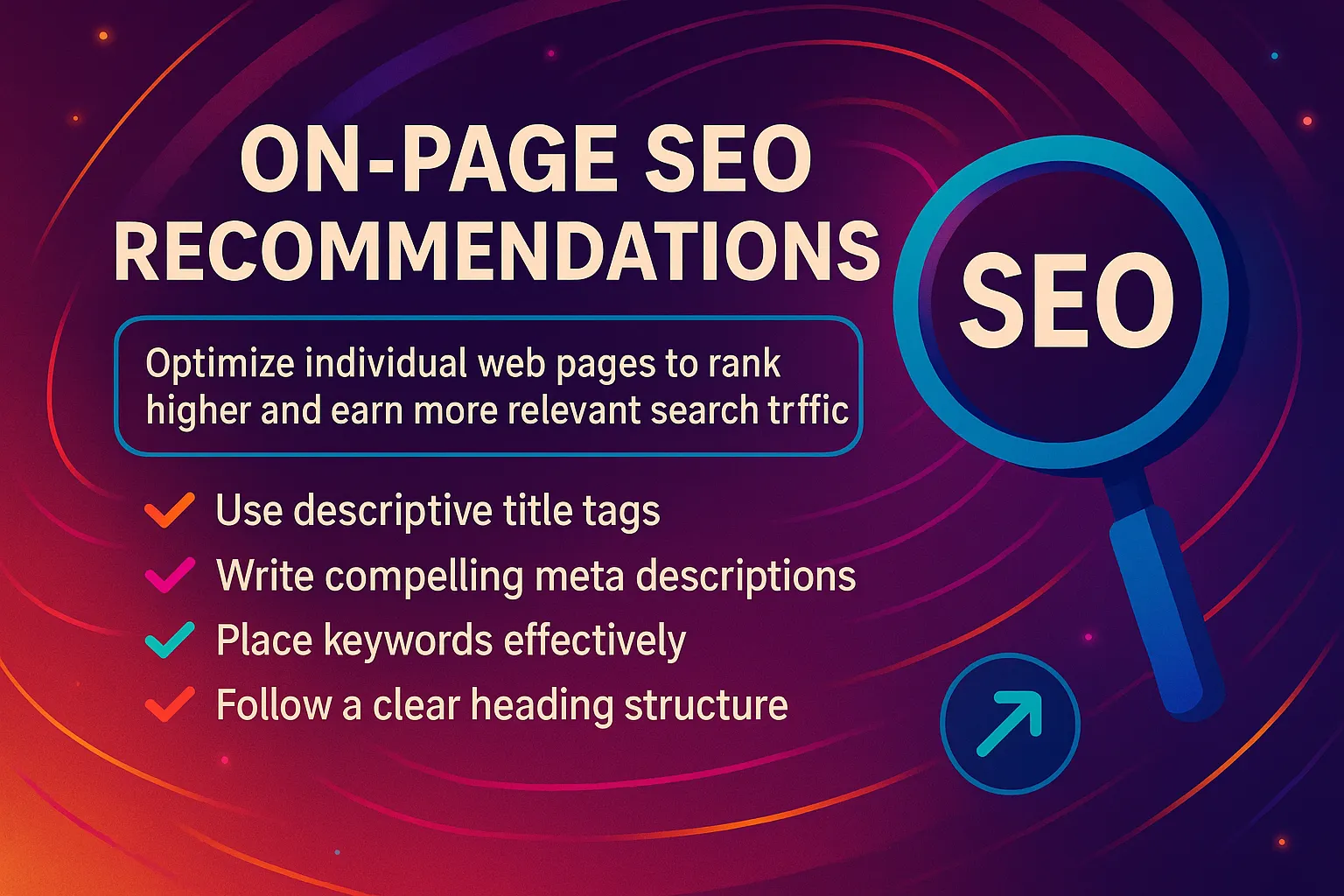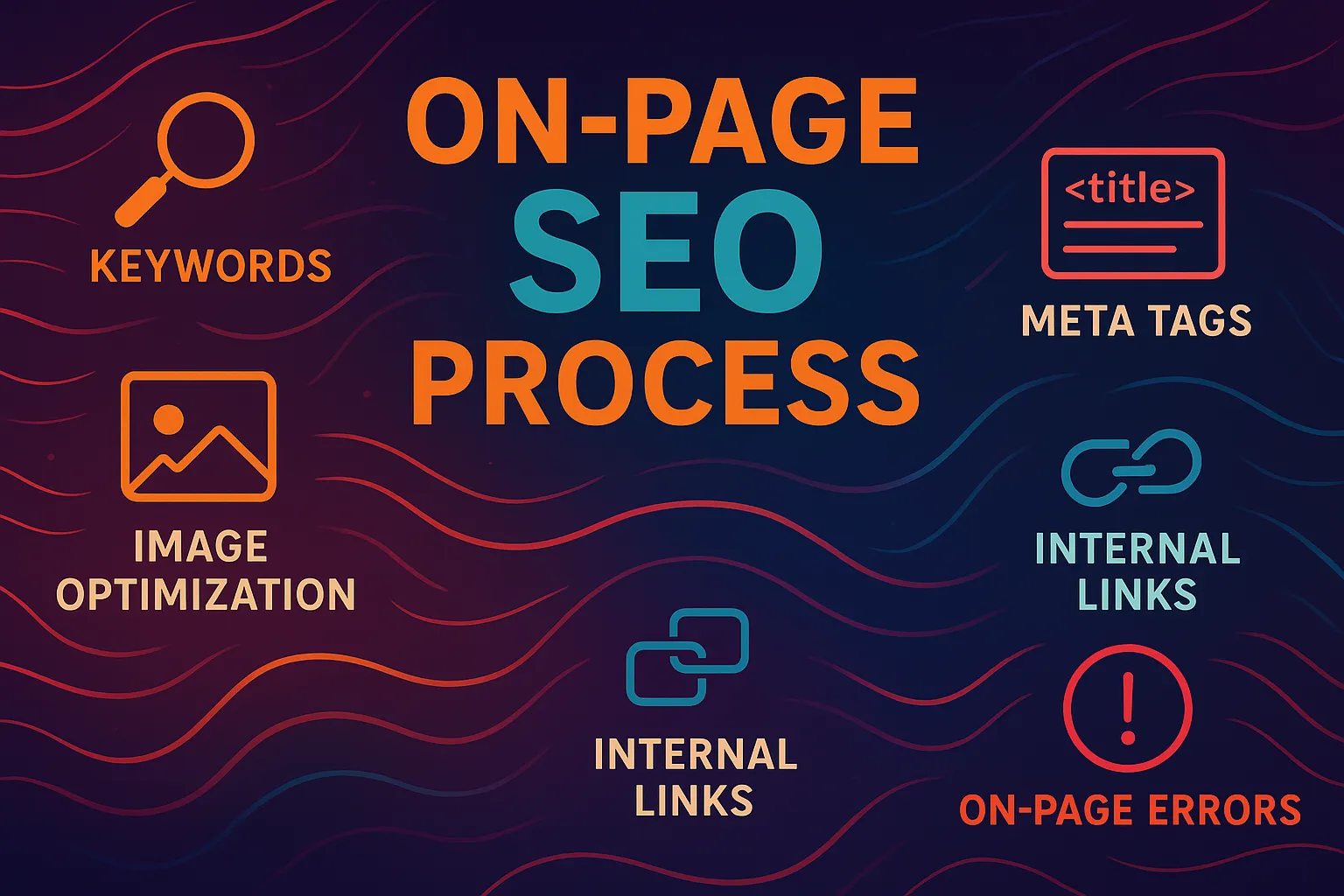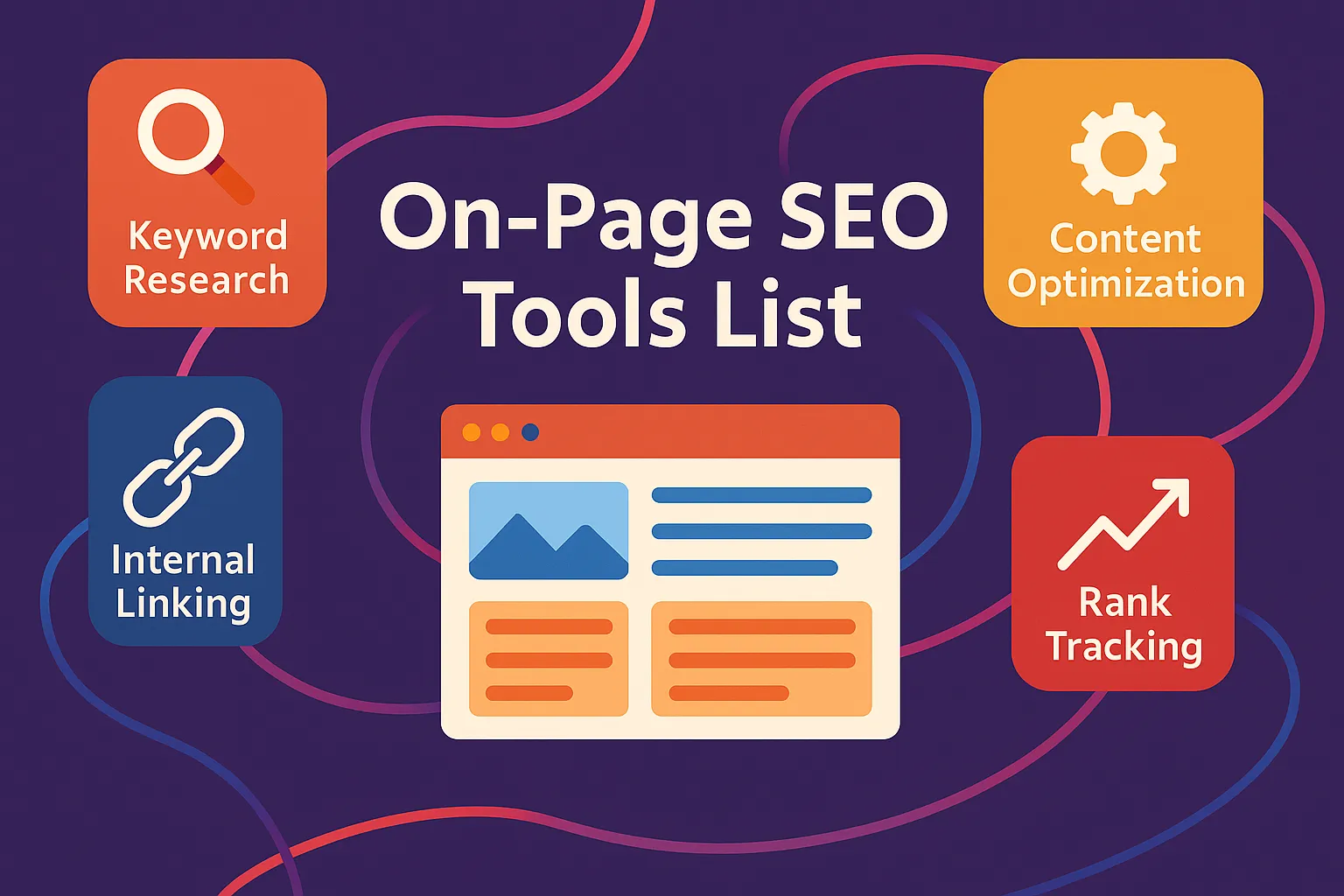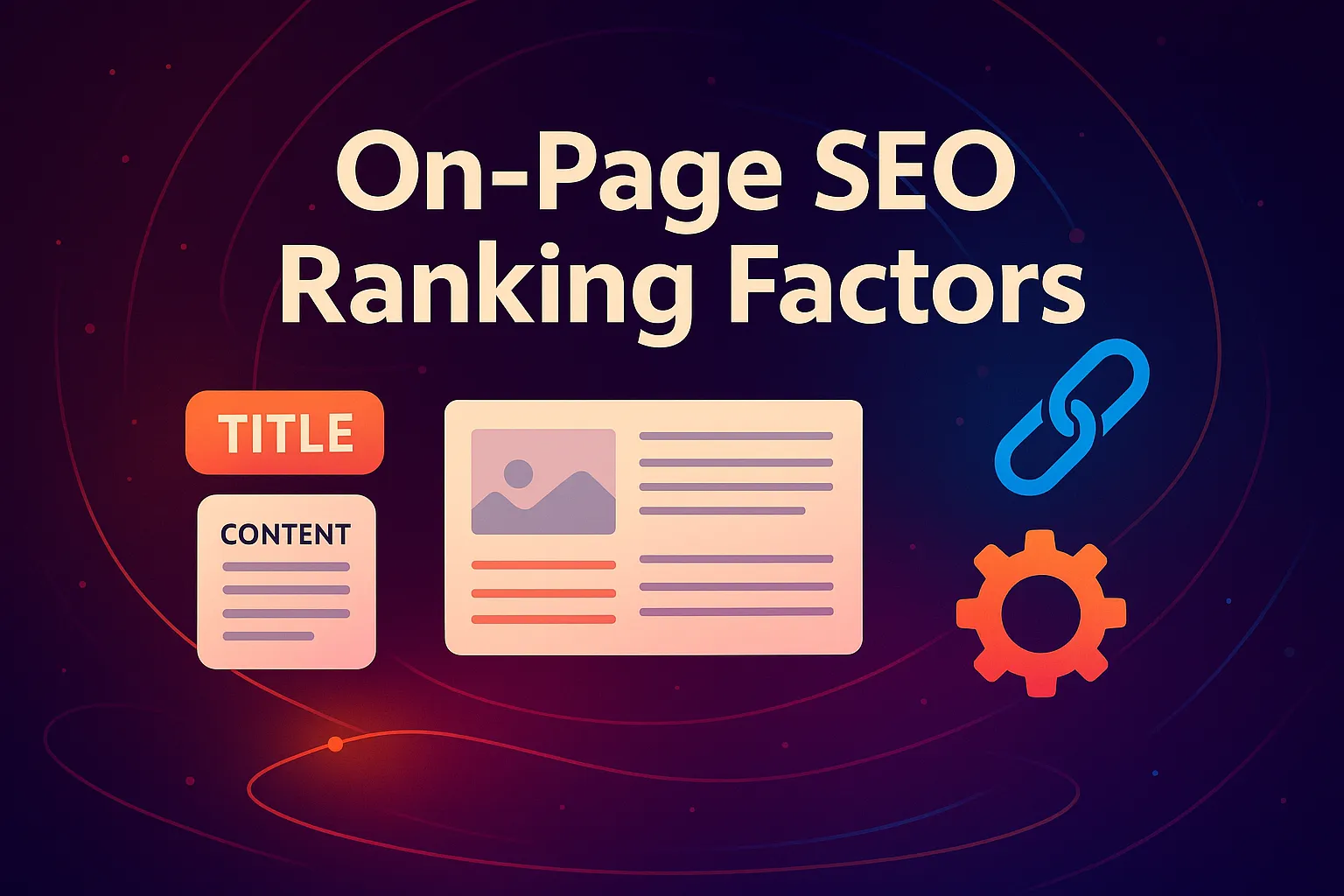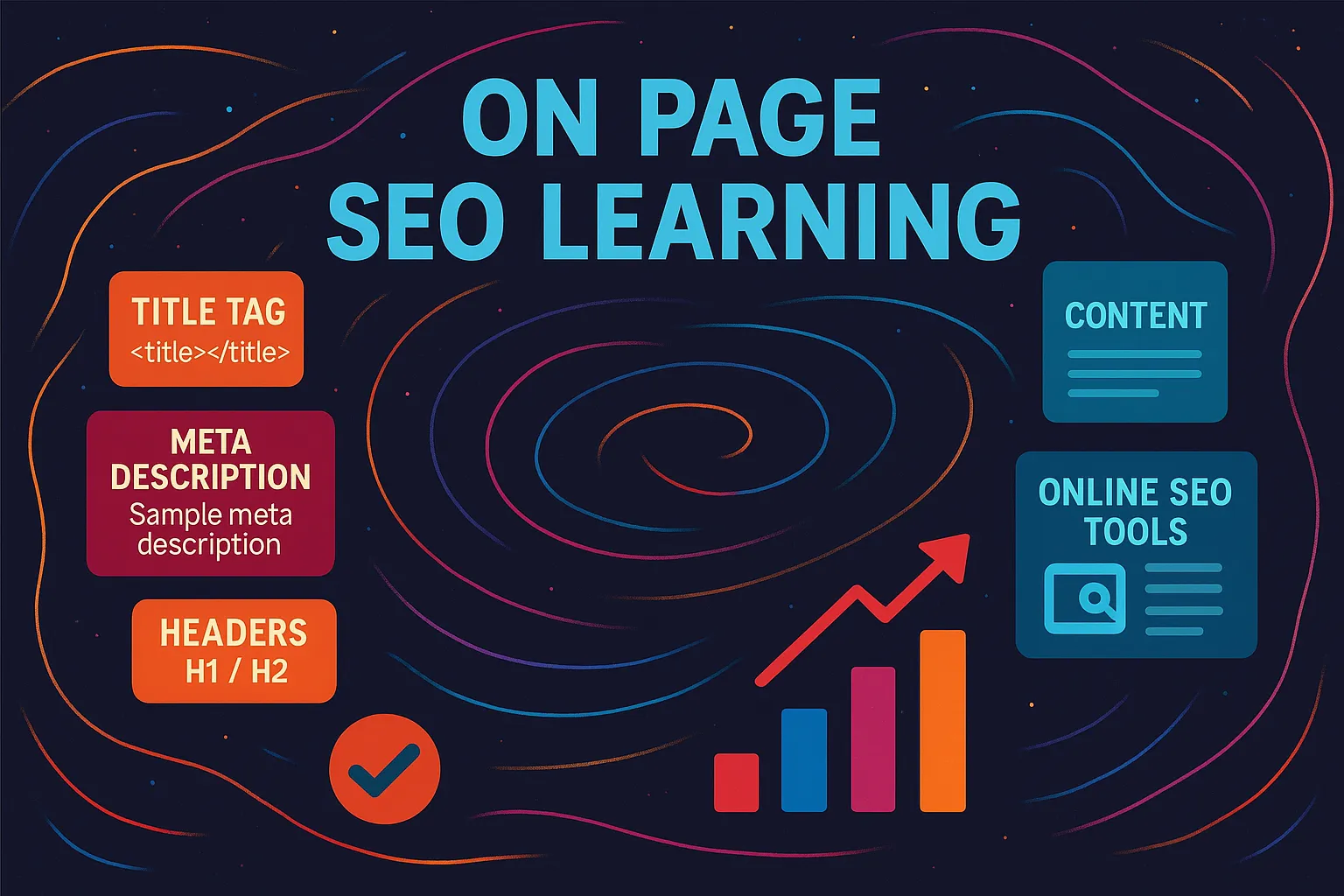What Is “On Page SEO Recommendations”?
On page SEO recommendations are the tactical improvements you make to each individual page on your site so it performs better in search results. This includes optimizing elements like your title tag, headings, images, internal links, and content structure to help search engines understand your page better—and reward it with higher rankings.
TL;DR (Too Long; Didn’t Read)
- This blog dives into real-world on page SEO recommendations that drive results.
- Learn how to optimize your titles, URLs, meta descriptions, images, and content.
- Understand keyword placement and avoid outdated SEO tactics.
- Use internal links, schema markup, and content refreshes to boost rankings.
- All advice is based on 10+ years of hands-on experience at Vibe Branding.
Why On-Page SEO Still Matters in 2025
I’ve been working in digital marketing for over a decade. At Vibe Branding, we’ve seen trends come and go, but one thing that hasn’t changed is how powerful a well-optimized page can be.
When we started helping clients rank on Google back in the early 2010s, on-page SEO was all about stuffing keywords and bolding every phrase. Thankfully, that era is long gone.
Now, Google wants human-first content—and when you build pages that serve people, not just bots, you’ll win. That’s why I want to break down our proven on page SEO recommendations—based on what works today, not five years ago.
These are strategies we use daily to help our clients show up on page one.
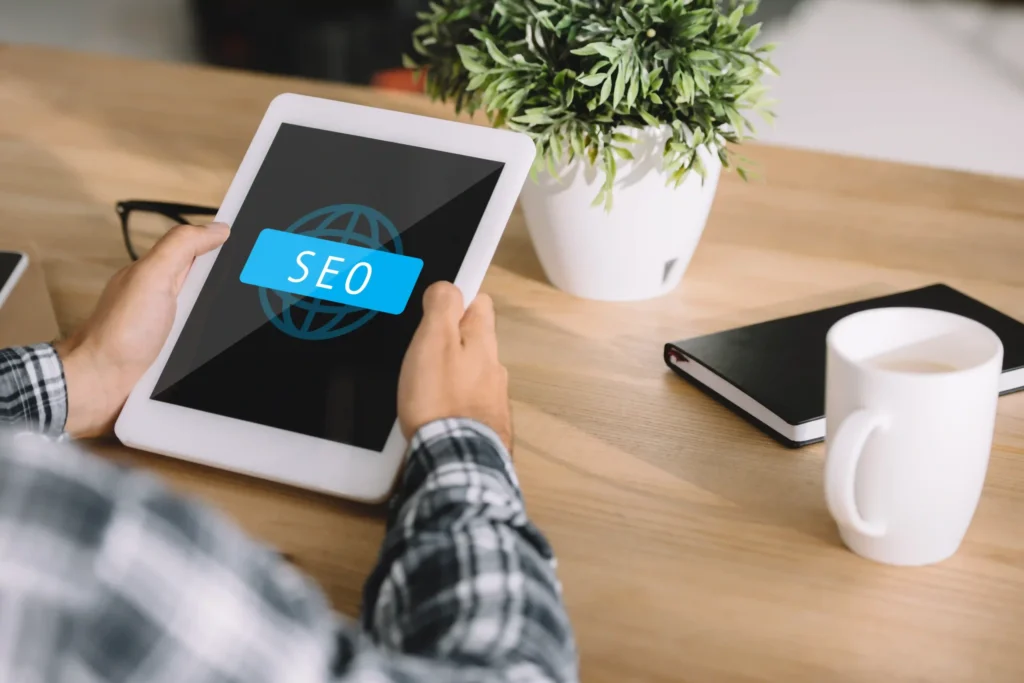
Understand Google’s Ranking Signals
Let’s talk about what really matters. First off, content isn’t king—useful content is.
You can write a 2,000-word blog post, but if it doesn’t match the searcher’s intent or answer their question, it won’t rank. Google’s algorithm has gotten smart, using natural language processing and machine learning to understand nuance.
So your page needs to be written clearly, structured well, and packed with value. At Vibe Branding, our team starts by figuring out what the reader is really searching for.
Are they looking for a checklist? A how-to guide?
A free tool? When we know that, we build the content to match.
Crafting Strong Titles and Meta Descriptions
Another area we focus on is title tags and meta descriptions. These might seem small, but they make a big impact on click-through rates.
I’ve seen pages jump in traffic just by rewriting the title to include the year or the right power word. A strong meta description that aligns with the headline can pull someone in and boost your SEO from both a ranking and traffic perspective.
We always front-load important keywords and use clear, actionable language. For example, instead of writing “Guide to SEO,” we’ll say “Complete On-Page SEO Recommendations for 2025 (Free Checklist).” That’s what grabs attention.
Smart Keyword Placement (Without Stuffing)
Let’s talk keywords. Yes, they still matter—but placement matters more than repetition.
We use keywords in our H1s, the first 100 words of content, and naturally throughout the body. One thing we’ve seen a lot is overuse of exact-match keywords, which makes content sound robotic.
Instead, we include related terms and synonyms so Google sees the context. This is a strategy we’ve used at Vibe Branding with great success, especially on long-form blog content where topic depth matters more than keyword density.

Structuring Headers for Clarity and SEO
Header tags also play a big role. Structuring your content with H1s, H2s, and H3s isn’t just for design—it’s for clarity.
We use one H1 per page, and we make sure our H2s and H3s break down the topic in a logical way. This helps readers skim and understand, which reduces bounce rates.
We also know Google looks at these headers to understand what the page is about. If your page lacks structure, it doesn’t matter how good the writing is—Google won’t know where to rank it.
Headers are your outline, and your outline should guide both humans and bots.
URLs That Speak Google’s Language
Now let’s look at URLs. A clean, keyword-rich URL isn’t just easier to remember—it signals to Google what the page is about.
We use short, descriptive URLs with hyphens instead of underscores. No random numbers, no fluff.
If your article is about on page SEO recommendations, your URL should be something like /on-page-seo-recommendations, not /post-2844. This sounds like a small tweak, but it builds trust with both users and search engines. It’s one of those things that takes 5 seconds to do and pays off for years.
Internal Linking Done Right
Internal linking is one of the most underused on page SEO recommendations out there. When we work with clients, we always look for ways to link their pages together logically.
Think of it like building a web within your website. This helps Google crawl your site more efficiently and passes page authority to newer or less-trafficked pages.
When you have a blog post about SEO tools, link it to your post about on-page SEO. Use anchor text that’s descriptive—don’t just write “click here.”
We’ve boosted rankings for dozens of clients by simply cleaning up their internal linking structure.

Creating Content That’s Actually Worth Reading
Content quality is the heart of everything. At Vibe Branding, we’re not into fluff.
If a paragraph doesn’t serve the reader, we cut it. Every page we create is trustworthy, useful, and actionable.
That means citing real data, using updated screenshots, and sharing firsthand insights. Readers can tell when content is regurgitated—and so can Google.
One thing we always ask ourselves before hitting publish: “Would we bookmark this?” If the answer’s no, we keep refining it.
That’s the bar you should set for every page you publish.
Optimizing Images for SEO and Speed
Image optimization is another underrated area. Every image should be compressed for speed, labeled with alt text, and include your keyword if it makes sense.
We use tools like TinyPNG and WebP formats to keep file sizes small. Alt text isn’t just for SEO—it also improves accessibility.
And file names matter too. Instead of uploading “screenshot1.png,” rename it to “on-page-seo-structure.png.”
Small things add up. Fast-loading, well-described images can improve page performance and make your site more inclusive.
Regularly Refresh Content for Continued Rankings
At Vibe Branding, we treat every page as a living asset. We refresh older content quarterly—checking for outdated stats, adding internal links, and adjusting for keyword intent.
This ongoing maintenance is a big reason our content stays relevant—and visible. One of our top-ranking pages has been updated six times since its launch.
That’s how you build SEO that lasts.

Avoid These Common SEO Mistakes
Let’s talk about common mistakes we see far too often. First, people stuff keywords into every sentence.
Second, they duplicate meta titles. Third, they ignore broken internal links and publish pages with uncompressed images.
Finally, many websites still aren’t mobile-optimized. These mistakes kill your chances at top rankings.
At Vibe Branding, we use a detailed checklist to make sure we catch every one of these errors before we publish. You’d be amazed how much of an SEO boost you can get by simply avoiding these pitfalls.
Let UX Be Your Secret SEO Weapon
User experience matters. We design pages that are easy to skim, fast to load, and structured to answer questions immediately.
If someone can’t figure out what your page is about within 10 seconds, they’ll bounce—and Google will notice. That’s why we place important content above the fold, chunk text into readable blocks, and use strong calls-to-action.
This isn’t just good UX—it’s great SEO.
Our Favorite Tools for On-Page Optimization
You don’t need fancy degrees to do SEO right—you just need the right tools. We rely on Semrush’s On Page SEO Checker, Google Search Console, Yoast for WordPress, PageSpeed Insights, and our own custom audit templates.
Each of these helps us optimize, track, and refine every page we launch. Tools don’t replace strategy, but they make the work smarter, not harder.
Final Thoughts from the CEO
If you’ve made it this far, you now know great SEO isn’t about gaming the algorithm—it’s about understanding your audience and building value. These on page SEO recommendations are the exact ones we use at Vibe Branding to help our clients grow.
Now it’s your turn. Audit one of your pages today using this guide.
Optimize your titles, improve your headers, clean up your images, and check your links. You’ll start seeing results—not overnight, but sustainably.
Need help getting started? Contact us here.
We’d love to help.

